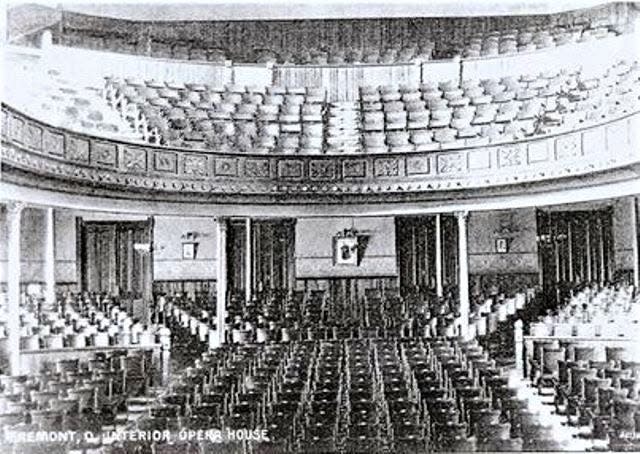Fremont Opera House at one time brought in the biggest entertainers
- Oops!Something went wrong.Please try again later.
I have written before about the Fremont Opera House which stood on the northwest corner of West State and Arch streets.
The building itself was a classic, referred to far and wide as the most beautiful structure in a wide area. But, beyond that, for a few decades it was home to some of the top attractions — both people and programs — in the entire country. John Phillips Sousa, Victor Herbert and Gilbert and Sullivan were among the famous names associated with the local opera house.
On Jan. 15, 1891, the opera house opened with Gilbert and Sullivan’s comic opera "The Gondoliers." In the late 19th century and early 20th century the opera house presented a wide variety of programs featuring famous performers. The shows offered at the opera house drew crowds from a wide area, often attracting large groups on excursions from much larger cities.
Times changed and apparently the opera house had to try to change along with the times in order to stay in business.

A 1917 Fremont Daily News carried some rather attention-grabbing advertisements for shows at the Opera House.
There was a promotion for a Sunday evening show that proclaimed “now for some fun.” “Uncle Sam’s Belles” was a “Whirly Girlie” burlesque show that featured 20 tinkling song hits and 30 hula dancers. The show was dubbed as “a razzle-dazzle of fun, music and dancing girls.” Seat prices, by the way, ranged from 25 cents to a dollar.
Shockingly, a few days before “Uncle Sam’s Belles” there was a one-day performance of “Should She Obey?” The advertisement claimed the movie was “Showing life in Reno, the greatest divorce colony in the world. Thousands of rich women flock there every year to secure easy divorces.” The advertisement urged “Women don’t miss seeing this picture!” and revealed this about the plot: “Discarded his wife for an actress.” It also warned “Owing to the daring expose of this evil we suggest that children under 16 years be accompanied by parents.”
In a bid to encourage further attendance, it was pointed out that “This same picture was shown at The LaSalle Theatre, Chicago, recently, where it had a run of ten weeks at prices of 25 cents to $1.00. The opera house was selling matinee seats for 5 or 10 cents and night show seats for 10 to 15 cents."
A newspaper nearly 10 years later seemed to show how the Opera House, which had become Fremont Theater, was fighting a tough fight to survive. Its advertisement for a “Big Musicomedy” was competing with ads from the Gem Theatre, the Jewel Theatre and the Strand Theatre which offered Douglas Fairbanks in “The Thief of Bagdad.”
Not long after that, the theater closed and the building remained mostly unused until it was torn down in 1959 to make way for a new Liberty National Bank facility.
Roy Wilhelm started a 40-year career at The News-Messenger in 1965 as a reporter. Now retired, he writes a column for both The News-Messenger and News Herald.
This article originally appeared on Fremont News-Messenger: Wilhelm: Famous performers graced the stage at Fremont Opera House

